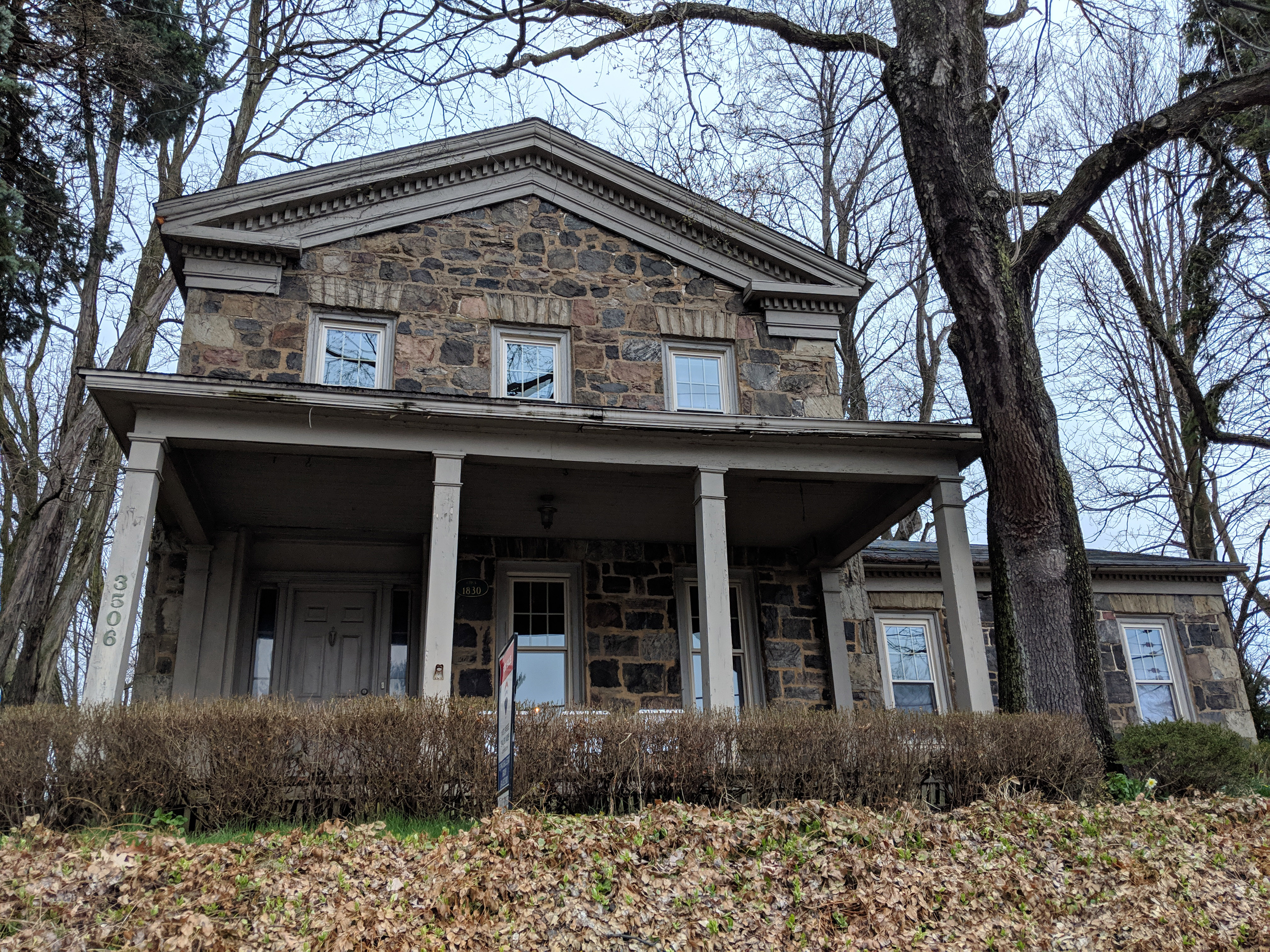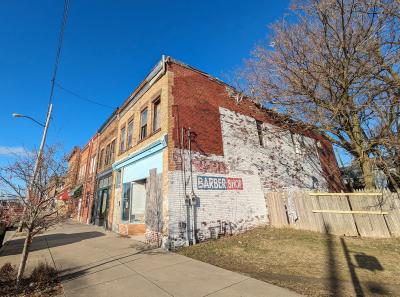The Emma Howell Family: Their Life Stories Are Erie History
Connecting the dots to discover Erie's first Underground Railroad station
There is one major event that is a thorn in the side of any local Erie history researcher, and that event happens to be where this story begins. In 1823, there was a fire that destroyed the Erie County Courthouse, and along with it, the official records of very early Erie pioneer history and the people who created it. The stories of people of early prominence, wealth, and status in Erie had the luxury of having their history recreated, retold, and re-recorded in the Erie history books – people whose names will pop up throughout this story like Daniel Dobbins, John Grubb, and William Wallace. However, all the people who simply lived, worked, and helped create a community in Erie's dirt road days have been almost totally erased.
It takes a very special person to take the time and effort to connect the dots of a life from those days, and to the benefit of the entire Erie community, Kevin Johnson is that person in the case of a long-forgotten key player in Erie's history: Emma Howell.
Emma Howell's recorded, referenceable history was all but erased in that aforementioned fire, but it was actually due to a footnote that the spark of discovering her story was initially fanned. While reading a book about the Underground Railroad in 2019, Johnson (a mechanical engineer by trade) noticed a footnote mentioning the name Amy Martin. The footnote referenced the book The Refugees From Slavery In Canada West, which was published in 1864 by Dr. Samuel Gridley Howe (who was a representative of the American Freedmen's Inquiry Commission).
Within that book is a testimony of Mrs. Amy Martin, the daughter of James Ford and Emma Howell. In it she retells the story of her family: "When we were in Erie, we lived a little way out of the village, and our house was a place of refuge for fugitives – a station of the Underground Railroad. Sometimes there would be 13 or 14 fugitives at our place. My parents used to do a great deal towards helping them on to Canada. They were sometimes pursued by their masters, and often advertised, and their masters would come right to Erie. We used to be pretty careful and never got into any trouble on that account, that I know of. The fugitives would be told to come to our house."
This connection of Martin to Erie – and the mention of an Underground Railroad station – spurred Johnson on a years-long research project that ultimately resulted in the self-publication of a nearly 300 page-long book entitled The Short Story, Big Life of Emma Howell, the Ford Family, and Erie's First Underground Railroad Station.
Within this book, Johnson makes an impressive effort to connect any relevant dots to eventually draw out the life and timeline of Erie's earliest Black history. Every reference is meticulously cited and transcribed, including census documents, wills, deeds, goods transfers and ledgers, diary pages, maps, newspaper articles, and other historic documents.

The Crowley House in Lawrence Park was built in 1832 and was previously believed one of the first Underground Railroad stations operating in Erie – shuttling fugitive enslaved people via nearby Fourmile Creek to the lake and on to Canada. The recently discovered Howell-Ford station predates this Underground Railroad station by at least 11 years. (Photo: Erin Phillips)
Emma Howell, who was brought to Erie with her mother and sister (making her part of the first Black family to live in Erie), was initially enslaved by early pioneer and surveyor of Erie County John Grubb, and was eventually sold by Grubb to William Wallace. When Wallace, who was Erie's first attorney, moved to Harrisburg some years later, he gave Emma Howell her freedom, along with a large swath of land which would have been on the outskirts of the city at the time. It is thought that she met and married James Ford (a runaway slave from Canada) after she was free.
Johnson cites an Erie Gazette article from Sept. 15, 1874 that reads: "William Wallace Esq., owned the greater part of the real estate on both sides of Parade Street, from Ninth Street to 17th Street. When he left Erie and removed to Harrisburg in 1811, he emancipated a black woman named Emma Howell, who had been brought to this country by the Grubb family, and afterwards sold to Mr. Wallace by them. Mr. Wallace not only gave her her freedom but also a life estate in real estate on both sides of Parade. 'Old Ame,' (as she was generally known), married James Ford, a colored man, and built a log house east of Parade, north of 10th, in 1811, which was the first dwelling erected on that street. They long resided there and raised a family of children … The second house was built in 1821, by a colored man, at the corner of Parade and 12th streets, east side, and occupied by different families several years, and was a very popular resort in 1827 and 1828." This "second house" was likely the Underground Railroad station to which Amy Martin was referring in her testimony to Dr. Howe.
So from at least 1821 to 1836 (when Emma and James, in their old age, went to live with their daughter Amy in Canada), this "second house" was active as an Underground Railroad station – dating its existence before any other previously documented stations or activity was happening in Erie, making it the first Underground Railroad station in Erie County and making history as such.
Johnson's book makes connections between the Howell-Ford-Martin family to major historical figures like Harriet Tubman, John Brown, and Frederick Douglass, making this early Erie history significant not only to people living in our county, but to all of Black history nationally.
It is for his extensive research and dedication to uncovering this story that Kevin Johnson recently received a Greater Erie Award for Education and Advocacy from the local nonprofit group, Preservation Erie. Within his acceptance speech for this award, Johnson details some of the motivation behind continuing his work and research, "The people of Erie should know how Erie started. A lot of people know about Daniel Dobbins and Oliver Perry and Harry Burleigh, but they don't know about the first people who came and laid out Erie and they don't know that there were important Black people who were a part of that team, and who were treated as equals, who put as much effort as anyone else into laying out Erie."
Melinda Meyer, president of Preservation Erie, comments on the decision to give an award to Johnson: "Many of Preservation Erie's Greater Erie Awards recognize historic properties and the people who care for them, but in Kevin Johnson's case, he's the steward of a story that has long lost its physical evidence. As with so many historic buildings and sites that once stood as documentation of Erie's thriving African American community, the home and business of Underground Railroad station operators Emma Howell and James Ford at East 12th and Parade streets vanished long ago, and with them the story – the story of an enslaved woman turned property and business owner who helped others find freedom."
Meyer continues, "Because the current streetscape bears no reflection of this history, and yet it is such a significant part of the city's story and worth preserving, it was important that Mr. Johnson's discovery and stewardship of the Howell-Ford story be recognized."
However, the fact that the streetscape isn't reflective of the Howell-Ford story is about to change.
Housing and Neighborhood Development Service (HANDS) of Erie has recently decided, through conversations with Preservation Erie, Kevin Johnson, and neighboring property owner John Vanco, to dedicate their latest adaptive reuse affordable housing project to the Emma Howell legacy. CEO of HANDS Matthew Good comments, "Every building has a unique history. When HANDS and our team began the development process for the abandoned building at 1319 Parade St., little was known about the site other than appreciating that the structure was built in 1912 and that it has seen more than 110 years of Erie's history."
Good continues, "We were excited about the work of local historian Kevin Johnson that made us realize the history of the land where the building stands runs much deeper. The land was once owned by Emma Howell-Ford and was part of her Underground Railroad operation. She owned the property from Ninth Street to 15th Street on the east side of Parade (where 1319 Parade St. now stands). HANDS feels the name 'Emma Howell Apartments' is a great way to memorialize this history."
While the project is still in its very early stages, HANDS has also committed to placing the Pennsylvania Historical and Museum Commission Marker commemorating the Howell-Ford Underground Railroad station within that building's footprint. Johnson succeeded in procuring the marker from the state last year and, up until now, has struggled to find an appropriate public space to display the marker.
Good reflects on the Howell apartment dedication and Emma Howell's legacy on Parade Street, "Although on a much smaller scale of magnitude, HANDS also feels providing affordable housing to low income residents in need, including homeless and special needs populations, has some charitable parallels to the work Emma did on this same very same land. She truly helped and housed people facing staggering challenges during her time in Erie, at a time when slavery was still legal."
Thanks to Kevin Johnson and his community partners, the long-lost story of Emma Howell and Erie's first Underground Railroad Station has been discovered, retold, and re-recorded so that it can now belong to all of us as part of Erie's history.
Kevin Johnson makes a point to note that additional research for his book was contributed by Tracy Johnson and Debbi Lyon.
If you would like to read Johnson's book, The Short Story, Big Life of Emma Howell, the Ford Family, and Erie's First Underground Railroad Station, a copy is available in the Heritage Room on the second floor of the Blasco Library.
Erin Phillips, who serves on the board of Preservation Erie, can also often be found in the Heritage Room on the second floor of the Blasco Library, can be reached at erin@eriereader.com




